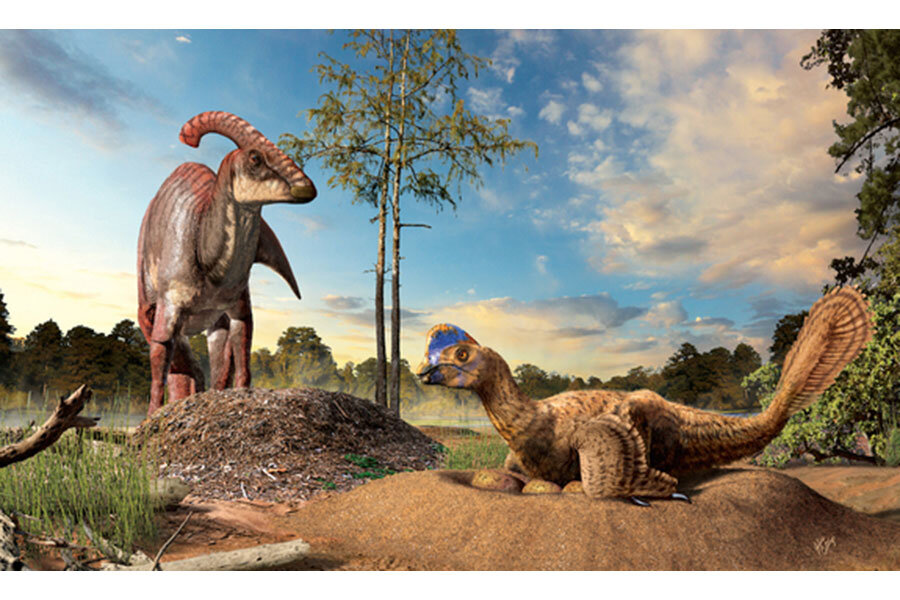Ancient dinosaur eggshells show their nesting connection with birds
Loading...
A study of 150-million-year-old dinosaur eggs is helping researchers understand how dinosaur nests were built and changed over time, as some of the animals evolved into nesting birds.
While some dinosaurs buried their eggs, like crocodiles do today, to incubate and protect them from predators, others – namely the theropods, or early bird relatives – built open nests like modern birds do, a study published last week in the journal PLOS One suggests.
Scientists from the University of Calgary and the Royal Tyrrell Museum of Palaeontology in Canada compared the fossilized eggs of 29 species of dinosaurs to 130 species of their closest living relatives, modern birds and crocodiles, to determine this.
Dinosaur nests are hard to study because they’re usually not well preserved, study co-author Kohei Tanaka, a PhD candidate at the University of Calgary, told LiveScience.
"In the past, this lack of data has made working with dinosaur eggs and eggshells extremely difficult to determine how dinosaurs built their nests and how the eggs were incubated for hatching young."
So to conduct their research, Mr. Tanaka and the research team came up with a novel solution: they compared the pores, or holes, in preserved dinosaur eggshells with those of birds and crocodiles. The size and number of pores in the various eggs offered clues to how they were buried.
Since there’s less air in buried nests, eggs that incubate there are more porous. This helps increase the flow of oxygen into and carbon dioxide out of the eggs. But eggs found in open nests, like those of birds, have fewer or smaller pores.
In comparing the porosity of eggshells from the dinosaurs – including sauropods, theropods, and duck-billed dinosaurs – with those of birds and crocodiles, they found that some of the dinosaur eggs were highly porous, suggesting that they buried their eggs to incubate them, explains Science.
But some species of theropods laid low-porosity eggs, which suggests they incubated their eggs in open nests, probably on the ground. Though over time, as these dinosaurs evolved into today’s birds, their nesting location may have shifted to higher ground, said study co-author Darla Zelenitsky, an assistant professor of paleontology at the University of Calgary.
"The evolution of open nests and brooding behavior could have allowed small theropod dinosaurs, and obviously birds, to move to other nesting locations other than on the ground," which may have helped their evolutionary success, she told LiveScience.







